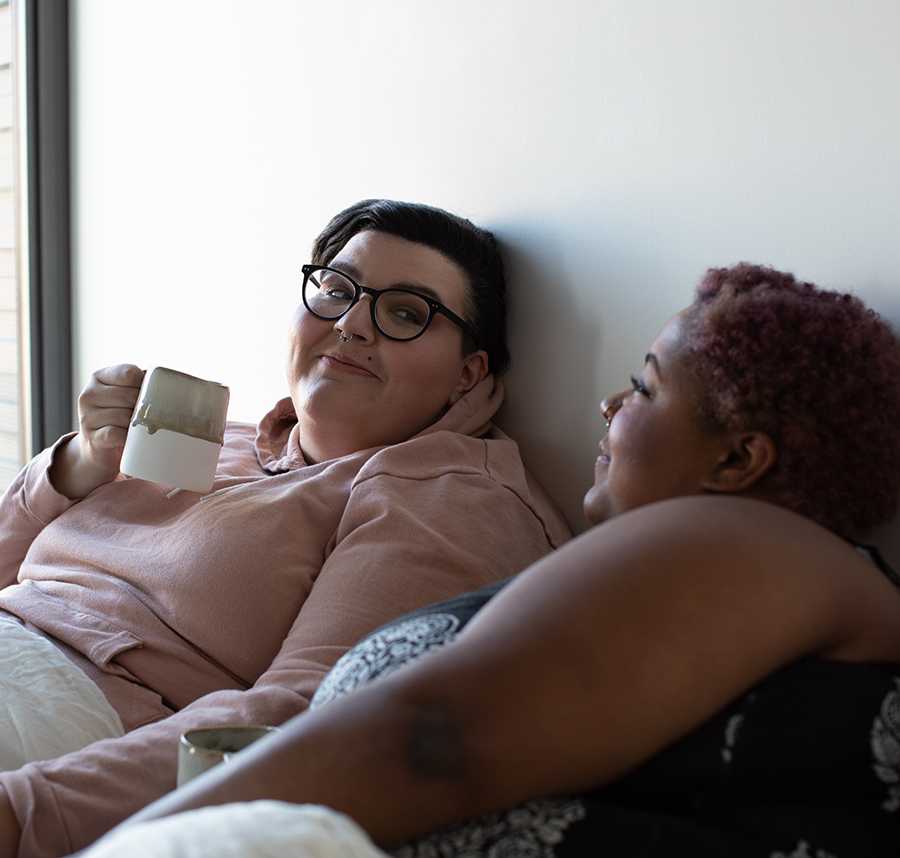Physical features
Imagine how boring the world would be if we all looked the same. Thankfully, humans come in many different shapes, sizes and appearances. And regardless of our height, hair colour, body shape or birthmarks, we all deserve to be treated fairly.

Photo by AllGo – An App For Plus Size People on Unsplash
What is physical features discrimination?
Physical features discrimination is when someone discriminates against you, including treating you unfairly or bullying you, because of a physical feature that you have.
Under the Equal Opportunity Act, physical features means:
- height
- weight
- size
- shape
- facial features
- hair
- birthmarks.
Examples of discrimination because of physical features
- A fast food company only hiring people with a certain ‘look’, that is, a specific height, weight and build.
- A teacher making rude comments about a student’s birthmark.
- A nightclub refusing entry to someone because of their weight.
- A local basketball team only signing up people over 185cm tall.
How does the law protect me?
Discrimination is against the law if it happens in an area of public life such as:
- work
- school, TAFE or university
- a club or sporting organisation
- shops and restaurants
- aged care, hotels or rental properties.
Under the Equal Opportunity Act, duty holders (such as employers, schools, and goods and service providers) have a positive duty to eliminate discrimination, sexual harassment and victimisation in these areas, as far as possible.
It is also against the law to victimise a person, which means treat them badly, because they have made complaint about discrimination or helped someone else make a complaint.
You can make a complaint
Get help from us.
You can make a complaint to us if you think you have experienced:
If you wish, someone else can make a complaint for you. Find out how we help people resolve complaints.
We can also give you information about your rights.
Physical features discrimination at work
Nearly half of the complaints about physical features discrimination that come to us are work related (40.5% in 2020-21).
While a person is responsible for their own unlawful behaviour, employers can also be held responsible.
Under the Equal Opportunity Act, employers have a positive duty to eliminate discrimination, sexual harassment and victimisation as far as possible.
Victoria is unique in having a positive duty, which creates an opportunity to prevent unlawful behaviour. It helps organisations put a healthy workplace culture in place, just as occupational health and safety laws require employers to take appropriate steps to ensure injuries don’t occur.
To ensure they are complying with the positive duty, organisations should also put measures in place to ensure that complaints are responded to swiftly and appropriately when they do arise.
The positive duty applies to employers of all sizes, regardless of whether they are a major company or a small cafe, and covers all types of workers:
- full-time, part-time and casual employees
- agents and contract workers
- trainees and apprentices.
It applies to all stages of employment, including:
- advertising jobs and recruitment
- returning to work after injury, illness or pregnancy
- dismissal and retrenchment.
Examples of workplace discrimination because of physical features
- A company refusing to hire someone for a front-of-house role because they have a prominent birthmark on their face.
- A staff member making inappropriate comments about the size of a colleague’s breasts (this could also be sexual harassment).
- A manager telling his receptionist to dye her hair because she’s started going grey (this could also be age discrimination).
Can dress codes be discriminatory?
Schools and workplaces can set standards of dress and appearance but these should be reasonable.
Standards set by schools should reflect the views of the school community. Schools should make reasonable adjustments to uniform policies for people wearing religious dress, for example, allow students to wear hijab, yarmulkes or patkas in the same colour as the school uniform.
The dress codes of workplaces should also allow people to make reasonable adjustments to accommodate their disability, pregnancy or religious belief.
Are there any exceptions to the law?
There are some exceptions in the Equal Opportunity Act that mean it’s not against the law to discriminate in particular circumstances. For example, discrimination is not against the law if there is a real risk to someone’s health, safety or property.
Find out more about exceptions.
My human rights under the Charter
Every Victorian has the right to equal and effective protection against discrimination, and to enjoy their human rights without discrimination.
Victoria’s Charter of Human Rights and Responsibilities contains 20 basic rights that promote and protect the values of freedom, respect, equality, and dignity.
The Victorian Government, local councils and other public authorities must always consider Charter rights, including the right to equality, when they create laws, develop policies and deliver their services.
Find out more about your human rights under the Charter and what to do if you think they have been breached.